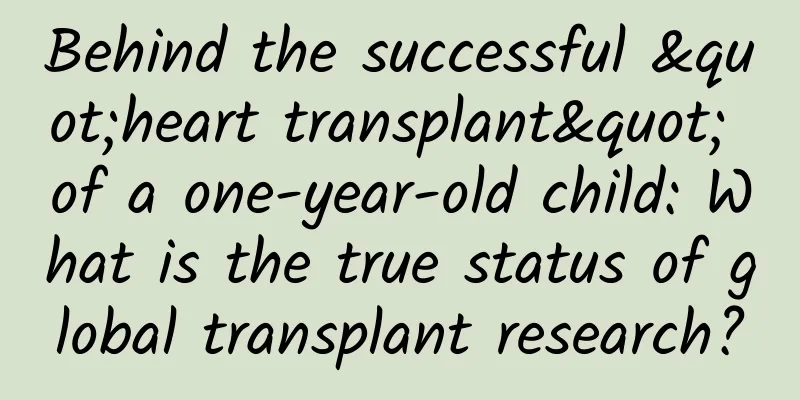How is the quality of 3bb blastocyst?

|
People who have done IVF know that the quality of test tube embryos is the factor that has the greatest impact on the success rate, and the success rate of embryo transfer is much higher than the three-day test tube transfer success rate. However, some patients have been reporting: My test tube embryos are of very good quality, and the doctor has also confirmed that my uterine wall is very good, and the transplanted embryos are embryos, but why do I keep failing to implant them? Let us explain this issue in detail today. What is the quality of 3bb embryos? 3bb embryos are of relatively high quality and can be transplanted normally under these circumstances. Generally, AA-grade embryos are the highest quality test tube embryos. After a woman takes eggs for test tube fertilization, the cysts will be cultured to a certain stage. If no AA-grade embryos are found, and only BB-grade embryos are found, they can still be transplanted normally, and there is a chance that the transplant will be successful. The success rate of in vitro fertilization is not only related to the quality of the test tube embryos, but also to comprehensive factors such as the environment of the female uterine wall and the overall health status of the woman. The success rate of in vitro fertilization is around 30-40%. Therefore, before doing in vitro fertilization, women should pay attention to regulating their body's health, avoid the stimulation of adverse conditions, and try to select high-quality eggs and sperm for fusion development. From a medical point of view, there are four main reasons why IVF embryo transfer is unsuccessful: 1. Chromosomal abnormality refers to the chromosomal abnormality of the test tube embryo itself If the transplantation fails due to chromosomal abnormalities in the test tube embryo itself, the patient should not be discouraged or complain to the doctor immediately, because these test tube embryos with chromosomal abnormalities sometimes appear to have normal cell size and normal breakdown rate and are high-quality test tube embryos belonging to level one or level two in the test tube embryo grade classification. The older the woman undergoing surgery, the greater the chance of test tube embryo abnormalities. Therefore, you must do IVF as early as possible and don’t wait until you are old, because the older you are, the greater the risk. 2. The zona pellucida is solid or too thick It is used to maintain oocytes and test tube embryos before fertilization of oocytes and before implantation of test tube embryos. If the test tube embryo is formed outside the body for too long, the zona pellucida will thicken and harden; the zona pellucida of the egg cells discharged by older women is also thicker. If the zona pellucida is too thick or too hard, it may cause the fertilized egg to fail to implant. This kind of situation must rely on "assisted ovulation" technology to solve this problem. The patient himself does not need to worry, because if the failure is caused by this factor, the doctor will solve it. 3. Shaping the natural environment outside the body The environment created outside the body can only be infinitely simulated, close to the environment of the pregnant mother's uterus. In other words, the external environment of the body can never compare to the natural environment of the pregnant mother's uterus, which may also be the reason for the failure of the fertilized egg to implant. This requires patients to choose an authoritative hospital before undergoing IVF, especially the doctor's skills, laboratory environment, and excellent equipment. 4. Other reasons Endometriosis, especially moderate to severe endometriosis, will cause the uterus and ovaries to respond worse to ovulation drugs, and the quality of test tube embryos, embryo implantation and pregnancy rate will also be reduced. However, this type of clinical medical discovery still lacks in-depth scientific research confirmation. It is an indisputable fact that hydrosalpinx can affect the implantation of the fertilized egg. The fluid of hydrosalpinx is alkaline and contains cytokines, prostacyclins and other inflammatory substances that are harmful to the implantation of fertilized eggs. In addition, the injection of hydrosalpinx into the uterus will also cause the test tube embryo to be unable to integrate with the endometrium of the uterus. The above four factors are the fundamental reasons why even if the test tube embryo is cost-effective and the uterine wall is good, the transplantation is still unsuccessful. As long as the cause is found and treated with medication, success can be achieved. Friendly reminder: When preparing for IVF, the first step is to choose an authoritative hospital and an authoritative doctor. You should also pay attention to the service quality and the natural environment, because the service quality of medical staff will directly affect your mood, and a depressed mood will also affect the pass rate. Finally, I wish everyone good pregnancy. |
<<: 39 weeks lower abdomen pain like menstruation
>>: 40 weeks plus 4 days of abdominal pain
Recommend
Why is my period always one week early?
Do you know the reason why menstruation always co...
Is it OK to eat motherwort after abortion?
After an abortion, women should pay special atten...
What is the reason for lower abdominal distension during ovulation?
When a woman's eggs mature, ovulation will oc...
Counterpoint: Indonesia's smartphone shipments fell 10% year-on-year in Q2 2023
According to Counterpoint's tracking report, ...
What is the cause of back pain at 38 weeks?
As pregnant women get older, the burden on their ...
Symptoms of menopausal breast hyperplasia
Breast hyperplasia is a common breast disease in ...
What is the cause of vaginal itching and increased leucorrhea?
Now that it is summer, many women will experience...
Blood clots during menstruation
Menstruation is very important for every woman. I...
How can girls exercise to lose weight?
Having a pair of long and beautiful legs is what ...
Can pregnant women use conditioner?
Many pregnant women are afraid to use many things...
Which acupoints can be massaged to relieve dysmenorrhea?
For every woman, there are always a few days ever...
Female anus has a swollen feeling
The symptom of a feeling of heaviness and distens...
When is the ovulation period if the menstruation comes on the 29th
Under normal circumstances, in a month, a woman&#...
I got pregnant 5 days before my period.
The chance of pregnancy is very low, also known a...
Is a breast lump a tumor?
Women often have breast lumps, which is generally...









